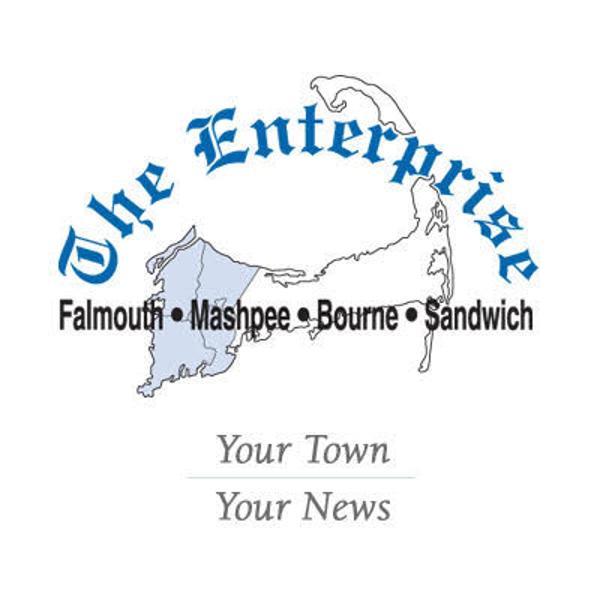
The Falmouth Coastal Resiliency Action Committee voted Tuesday, April 2, to apply for a grant from the Massachusetts Municipal Vulnerability Preparedness program to study multiple options and scenarios for a resilience plan for the area from Trunk River to Shore Street. The board of selectmen must first give approval to move ahead with the grant proposal.
Conservation agent Jennifer L. McKay said during the committee meeting that before she makes her presentation to selectmen Monday, April 8, she will receive a one-page summary of the grant application and budget numbers from the Woods Hole Group, a Falmouth-based environmental consulting organization that will prepare the grant application.
The application is due to the state April 19, Ms. McKay said.
One aim of the study is to prepare an “implementation plan pathways” model—a set of “if this happens, then do this” strategies for adapting to different coastal environmental change scenarios—that takes into account town assets including the bike path, sewer, water infrastructure and the road system as well as natural features, committee chairman Charles T. McCaffrey said.
“Part of the purpose of [the strategies] is to be able to use the natural features as part of the resilience. The healthier the natural features are, the more resilient we’ll be,” committee member Melissa C. Freitag said.
Mr. McCaffrey agreed and added that while the town might be able to defend the barrier beach and Surf Drive for the next 20 years, “at some point it may have to be abandoned if sea-level rise is more aggressive.”
“If you do strategies that are cost-benefited for a certain period of time and then you shift, there’s an adaptive management,” he said.
According to the grant proposal overview Ms. Freitag provided in Tuesday’s meeting, over several decades Falmouth has sponsored and/or received several studies, plans and reports suggesting actions that the town can take to protect itself from natural coastal processes. These reports include the Coastal Resources Working Group’s South Coast Shore Study in 2003 and the Buzzards Bay Shore Study in 2010, the Falmouth Multi-Hazard Mitigation Plan in 2017 and the Municipal Vulnerability Preparedness workshop conclusions from last year.
“The Falmouth Coastal Resiliency Action Committee has won grants for and sponsored the MVP workshop and the ongoing town resources vulnerability assessment. Now, the committee intends to apply for state grants to execute projects to enhance the town’s resiliency to natural shoreline encroachment. The committee will found its applications on conclusions of the above-mentioned projects,” the overview said.
The primary recommendation from last year’s Municipal Vulnerability Preparedness workshop was that Falmouth should “develop a retreat plan for coastal roadways, and the town’s multi-hazard mitigation plan concluded that Falmouth should “evaluate alternatives for protecting, relocating or abandoning vulnerable sections of Surf Drive,” the overview said.
An intermediate-term action item from the Coastal Resources Working Group’s studies recommended that within the next five years Falmouth should “develop plans to move town-owned infrastructure away from the immediate shoreline, if damaged in a storm or if located in a high-hazard coastal area, to inland areas or to less-risky coastal areas.”
A long-term action item suggested that in the next 20 to 100 years Falmouth should “remove vital transportation corridors from coastal zones. This includes moving affected shore roads inland, elevating shore roads that cannot be moved and removing selected shore roads.”
With Woods Hole Group, the committee is drafting a grant proposal to sponsor a study to examine the area along the bike path and Surf Drive from Trunk River to Shore Street and to determine potential solutions for the town’s two trafficked rights-of-way, the overview said.
“A proposed delineation for the project would run from Shore Street westward to the pump shed near the WHOI Quissett Campus’s pathway along the bike path, just west of the no-name wetlands west of Trunk River. This project would address the future of public ways and infrastructure along no-name pond, Oyster Pond, Salt Pond and Siders Pond and propose options for future use and hazard mitigation,” the overview said.
The committee has $100,000 in its budget to use as potential matching funds for the grant, Ms. Freitag added.
During Tuesday’s meeting, the committee, which also included members Andrew D. Ashton and Paul C. Dreyer, discussed different potential boundaries for the study, including limiting the area from Trunk River to Mill Road, ultimately deciding to extend the study area to Shore Street.
Also under discussion was the time frame of the study—to 2030, 2070 or 2100—and the committee decided it would seek more input on this from Woods Hole Group.